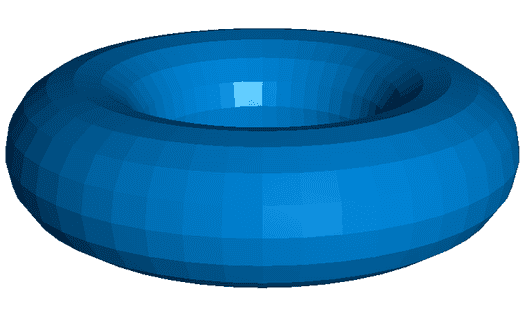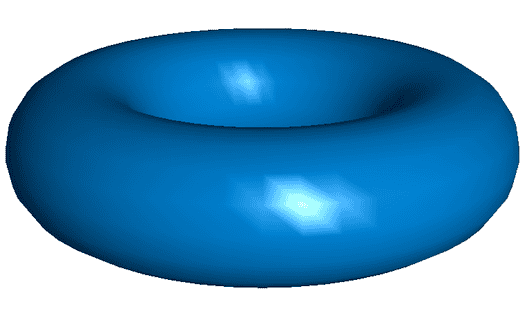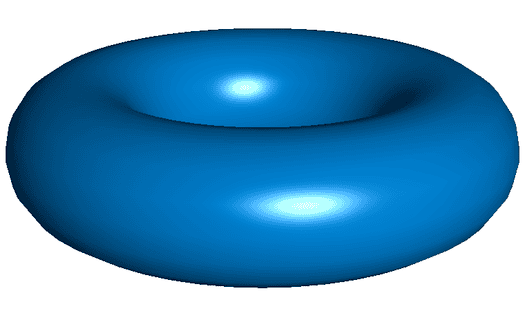1. Introduction
In computer graphics, shading refers to the techniques used to determine the color and brightness of surfaces in a 3D scene. The process involves simulating the interaction between light and objects to create realistic or stylistic visual effects.
Shading is crucial for adding depth, detail, and texture to 3D models, making them appear more lifelike. Various shading techniques have been developed over the years, each with its own characteristics and computational requirements. Among the most common shading techniques are Flat shading, Gouraud shading, and Phong shading.
In this tutorial, we’ll provide a comprehensive introduction and comparison between the three shading techniques.
2. Flat Shading
Flat shading is one of the simplest and earliest techniques used in computer graphics to render 3D models. Developed during the early days of computer graphics, flat shading calculates the color of each polygon face based on a single lighting calculation, applying this color uniformly across the entire face. This method provides a straightforward way to depict 3D shapes without the computational complexity associated with more advanced shading techniques.
In flat shading, the color of each polygon is determined by the angle between the polygon’s surface normal and the light source. The surface normal is a vector perpendicular to the polygon’s face, and it plays a crucial role in determining how light interacts with the surface. The lighting calculation typically involves the dot product of the surface normal and the light direction vector, which determines the intensity of the light hitting the surface. This intensity value is then used to shade the entire polygon uniformly:

Characteristics of flat shading:
- Calculation: One lighting calculation per polygon
- Appearance: Produces a faceted look with sharp edges between polygons, as each face has a uniform color
- Performance: Fastest among the three techniques, as it involves the least number of calculations
- Use case: Suitable for simple, low-polygon models where a faceted look is acceptable or desired
Flat shading is beneficial in situations where computational efficiency is more important than visual realism. It can be used in applications such as wireframe models, early video games, or any scenario where speed is a priority over detailed shading.
The below simple Python snippet simulates flat shading on a 3D object using the flat_shading function. In flat shading, each polygonal face of the object is shaded uniformly, based on the angle between the face’s normal vector and a light_source direction:
def flat_shading(vertices, faces, light_source):
shaded_faces = []
for face in faces:
normal = calculate_normal(face, vertices)
intensity = np.dot(normal, light_source)
color = np.clip(intensity, 0, 1)
shaded_faces.append((face, color))
return shaded_faces
3. Gouraud Shading
Gouraud shading, named after Henri Gouraud, a French computer scientist who introduced it, improves upon flat shading by providing smoother transitions between colors. In Gouraud shading, the lighting calculations are performed at the vertices of the polygons. The colors at the vertices are then interpolated across the surface of the polygons, creating a gradient effect, as illustrated below:

Characteristics of Gouraud Shading:
- Calculation: Lighting calculations are performed at the vertices, and colors are interpolated across the faces
- Appearance: Produces smoother transitions between colors across the surface, reducing the faceted look seen in flat shading
- Performance: Slower than flat shading but faster than Phong shading, as it involves interpolation but fewer lighting calculations
- Use case: Suitable for models where smooth shading is desired without the computational expense of Phong shading
Gouraud shading is widely used in real-time rendering applications such as video games and interactive graphics, where a balance between visual quality and computational efficiency is necessary.
The gouraud_shading function below simulates Gouraud shading on a 3D object. Gouraud shading interpolates the shading across the vertices of the faces:
def gouraud_shading(vertices, faces, light_source):
vertex_colors = np.zeros(len(vertices))
vertex_count = np.zeros(len(vertices))
for face in faces:
normal = calculate_normal(face, vertices)
intensity = np.dot(normal, light_source)
for vertex in face:
vertex_colors[vertex] += intensity
vertex_count[vertex] += 1
vertex_colors /= vertex_count
shaded_faces = []
for face in faces:
face_colors = [vertex_colors[vertex] for vertex in face]
color = np.mean(face_colors)
shaded_faces.append((face, color))
return shaded_faces
4. Phong Shading
Phong shading, named after Bui Tuong Phong, a Vietnamese-born computer graphics researcher who developed it, provides the most realistic and detailed shading among the three techniques (see the illustration below). Unlike flat and Gouraud shading, Phong shading performs lighting calculations per pixel. It interpolates the surface normals across the polygon and calculates the color at each pixel using these interpolated normals:

Characteristics of Phong Shading:
- Calculation: Lighting calculations are performed per pixel, using the interpolated normals
- Appearance: Produces the most realistic and smooth shading, with highlights and reflections accurately rendered
- Performance: Slowest among the three techniques, as it involves the most calculations
- Use case: Ideal for high-quality renderings where realism is important, such as in animations, games, and detailed models
Phong shading is often used in scenarios where high visual fidelity is crucial, such as in animated films, high-end video games, and detailed scientific visualizations.
The below phong_shading function simulates Phong shading on a 3D object. Phong shading provides smooth shading across the surface of the object by interpolating normal vectors and computing the light intensity per vertex:
def phong_shading(vertices, faces, light_source):
vertex_normals = np.zeros(vertices.shape)
for face in faces:
normal = calculate_normal(face, vertices)
for vertex in face:
vertex_normals[vertex] += normal
vertex_normals /= np.linalg.norm(vertex_normals, axis=1)[:, np.newaxis]
shaded_faces = []
for face in faces:
face_colors = [np.dot(vertex_normals[vertex], light_source) for vertex in face]
color = np.mean(face_colors)
shaded_faces.append((face, color))
return shaded_faces
5. A Side-by-Side Comparison Between Flat, Gouraud, and Phong Shading
Here is a detailed side-by-side comparison between Flat, Gouraud, and Phong shading techniques:
Feature/Aspect
Flat Shading
Gouraud Shading
Phong Shading
Calculation point
Per polygon
Per vertex
Per pixel
Method
Single lighting calculation for the entire polygon
Lighting calculations at vertices, interpolated across the polygon
Interpolated normals, lighting calculated at each pixel
Color calculation
Uniform color across the polygon
Interpolated color from vertices across the polygon
Color calculated at each pixel for detailed shading
Appearance
Faceted look with sharp edges between polygons
Smooth transitions between colors, reduces faceted look
Smooth, realistic shading with accurate highlights and reflections
Performance
Fastest due to minimal calculations
Moderate speed, more calculations than Flat but fewer than Phong
Slowest due to per-pixel calculations and normal interpolation
Visual Quality
Low, with visible polygon edges
Moderate, with smoother color transitions
High, with realistic rendering and smooth gradients
Use Cases
Suitable for low-polygon models, simple graphics
Real-time rendering, video games, moderate detail models
High-quality renderings, animations, detailed models
Advantages
– Very fast
– Good balance between quality and performance
– High realism
– Low computational cost
– Smoother appearance than Flat
– Accurate highlights and reflections
Disadvantages
– Faceted appearance
– Still not perfectly smooth
– High computational cost
– Low realism
– Not as detailed as Phong
– Slower performance
Applications
Early video games, wireframe models, quick previews
Modern video games, interactive applications, real-time graphics
Animated films, high-end video games, scientific visualizations
6. Conclusion
In this article, we provided a brief introduction to three well-known shading techniques in computer graphics: Flat, Gouraud, and Phong. Each technique each offers different trade-offs between computational efficiency and visual quality, and each plays a pivotal role in determining the visual quality and realism of the 3D scene.
Flat shading is the simplest and fastest, suitable for applications where speed is critical. Gouraud shading offers a good balance between smooth appearance and performance, making it ideal for real-time applications. Phong shading, though computationally intensive, provides the highest level of realism, making it the preferred choice for high-quality renderings. Understanding these shading techniques and their applications helps in choosing the right approach for different graphical needs.